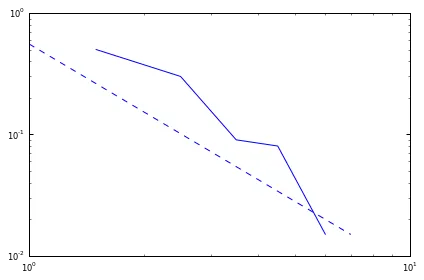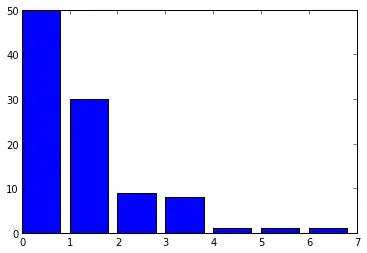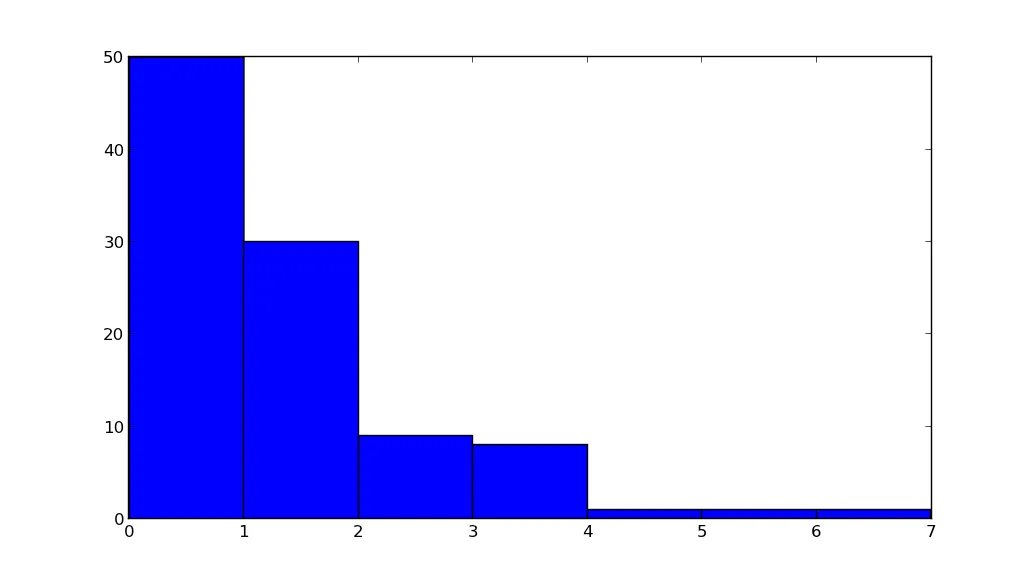我有以下列表:
[6, 4, 0, 0, 0, 0, 0, 1, 3, 1, 0, 3, 3, 0, 0, 0, 0, 1, 1, 0, 0, 0, 3, 2, 3, 3, 2, 5, 0, 0, 0, 0, 0, 0, 1, 0, 0, 0, 0, 0, 1, 2, 1, 0, 1, 0, 0, 0, 0, 1, 0, 1, 2, 0, 0, 0, 2, 1, 1, 0, 0, 0, 1, 0, 1, 0, 0, 1, 1, 1, 1, 0, 1, 1, 1, 3, 1, 1, 0, 1, 1, 0, 0, 0, 1, 0, 0, 1, 0, 1, 2, 2, 3, 2, 1, 0, 0, 0, 1, 2]
我想使用Python绘制每个实体的频率并对其进行幂律分析。
但我不知道如何绘制具有纵轴为频率和横轴为列表数字的图表。
我想创建一个包含频率的字典,并绘制字典的值,但是这样无法将列表中的数字放在x轴上。
你有什么建议吗?


